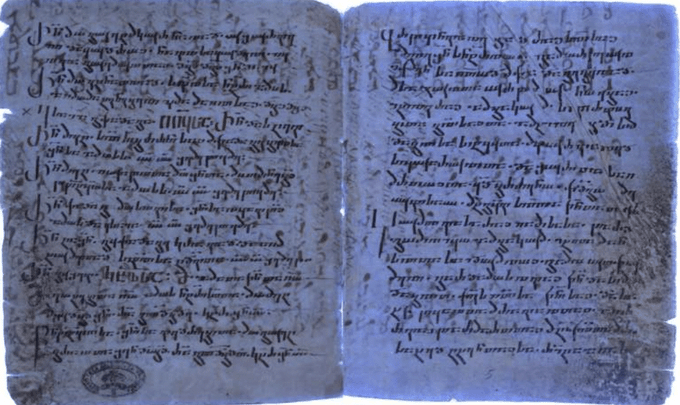Part of the Bible that was missing for 1,500 years, called the “Hidden Chapter,” has been discovered
Religion is an aspect of life that both separates and connects people worldwide. Its impact on human development is undeniable, regardless of one’s personal beliefs.
In recent years, science has gained prominence, overshadowing faith in some areas. However, countless individuals around the globe continue to find strength and motivation in their religious beliefs.
Recently, a significant discovery has created a buzz in the religious community: a supposedly lost “hidden chapter” of the Bible was found. As reported by the Independent, a study in the journal New Testament Studies states that this chapter was written 1,500 years ago and is one of the earliest translations of the Gospels.

Grigory Kessel from the Austrian Academy of Sciences was part of the research team that used ultraviolet photography to uncover the chapter, which was concealed beneath three layers of text.
Dr. Kessel mentioned that, until now, only two manuscripts contained the Old Syriac translation of the Gospels. The researchers who made this discovery said that the text is an interpretation of Matthew chapter 12 from the Bible, which was translated as part of the Old Syriac translations around 1,500 years ago.
According to the Independent, the text provides new insights into variations between translations. The original Greek version of Matthew 12:1 states: “At that time Jesus went through the grainfields on the Sabbath; and his disciples became hungry and began to pick the heads of grain and eat.” In contrast, the Syriac translation reads: “…began to pick the heads of grain, rub them in their hands, and eat them.”
In the study, scientists stated that the Gospel book was undoubtedly produced no later than the sixth century. By comparing it with other dated Syriac manuscripts, they could narrow down the possible time frame to the first half of the sixth century.
Long-lost chapter of Bible discovered
“Researchers said the revealed text is an interpretation ofMatthew 12, originally translated as part of the Old Syriac translations about 1,500 years ago.”https://t.co/554wqQY5Yv
— Catholic Herald (@CatholicHerald) April 12, 2023
It’s worth noting that during that time period (1,500-1,300 years ago), texts were frequently written over because parchment was scarce.
“Despite a limited number of dated manuscripts from this period, comparison with dated Syriac manuscripts allows us to narrow down a possible time frame to the first half of the sixth century.”
Claudia Rapp, Director of the Institute for Medieval Research at the OeAW, praised Grigory Kessel’s discovery, highlighting his deep knowledge of old Syriac texts and script characteristics. She emphasized that the finding demonstrates the value of combining modern digital technologies with basic research when studying medieval manuscripts.
Scientists confirmed that the Gospel book was definitely created no later than the sixth century. By comparing it with other dated Syriac manuscripts from the same period, they were able to establish a probable time frame for its creation in the first half of the sixth century.
“This discovery proves how productive and important the interplay between modern digital technologies and basic research can be when dealing with medieval manuscripts.”
“As far as the dating of the Gospel book is concerned, there can be no doubt that it was produced no later than the sixth century,” scientists concluded.
“Despite a limited number of dated manuscripts from this period, comparison with dated Syriac manuscripts allows us to narrow down a possible time frame to the first half of the sixth century.”
Absolutely, this discovery is truly remarkable! It offers valuable insights into early translations of the Bible and showcases the importance of combining modern technology with traditional research methods to uncover hidden historical treasures.





